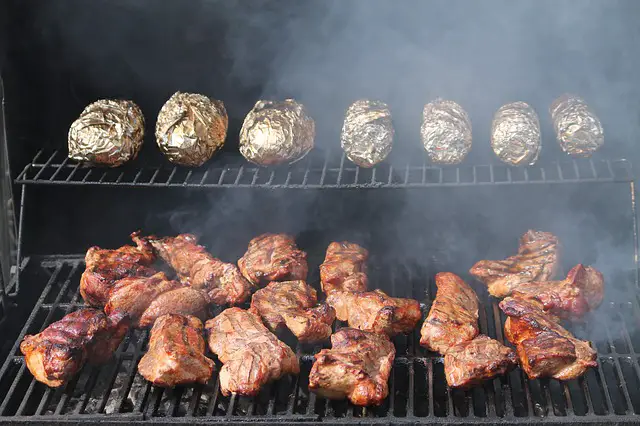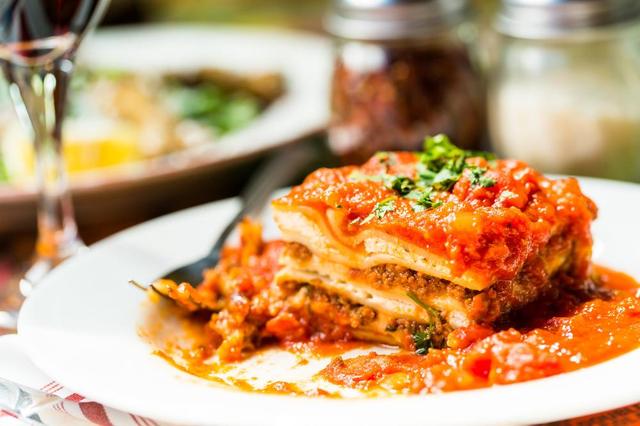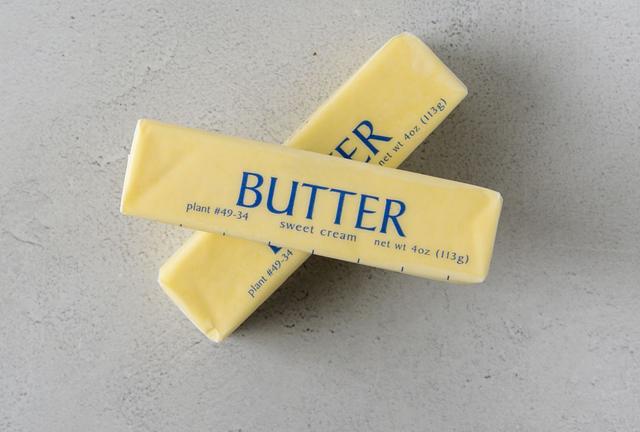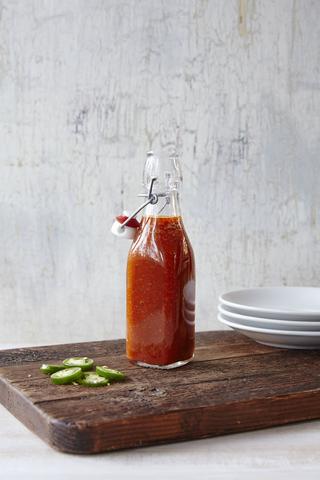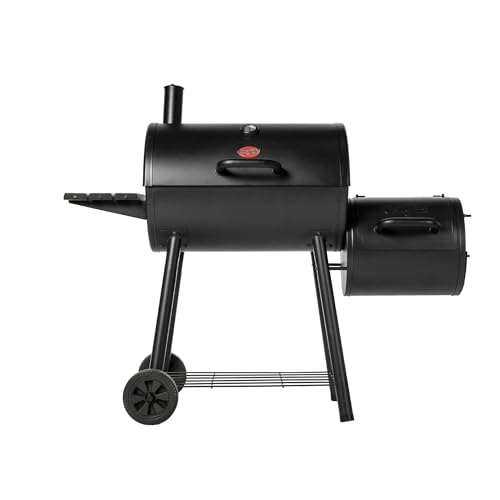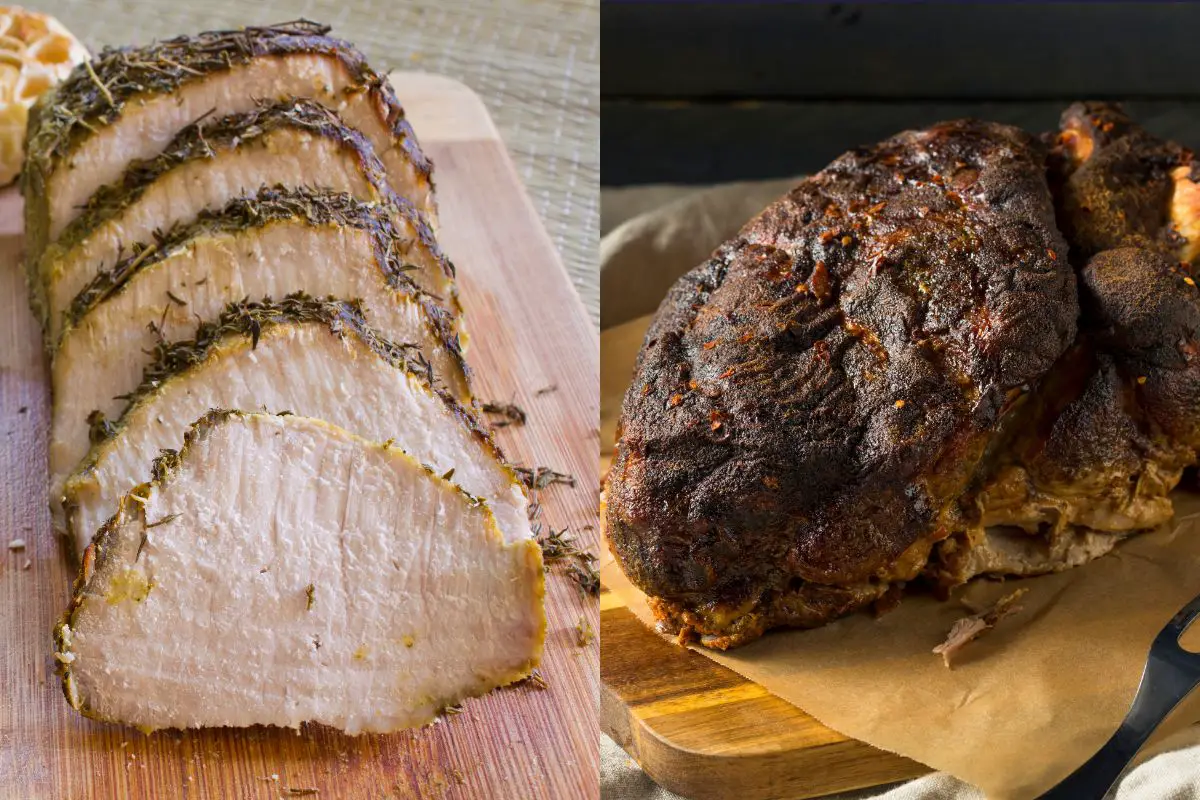
“Pork Loin vs Pork Shoulder: Unraveling the Battle of the Cuts. Discover the key differences between these two popular pork cuts, their distinct flavors, tenderness, and best cooking methods. Whether you’re a seasoned chef or an avid home cook, this guide will help you choose the perfect cut for your next delicious meal.”
Pork Shoulder vs Pork Loin: What is the Difference
When it comes to choosing the right cut of pork for your recipes, it’s important to understand the differences between pork shoulder and pork loin. While both cuts come from different parts of the pig, they have distinct characteristics that make them suitable for specific cooking methods.
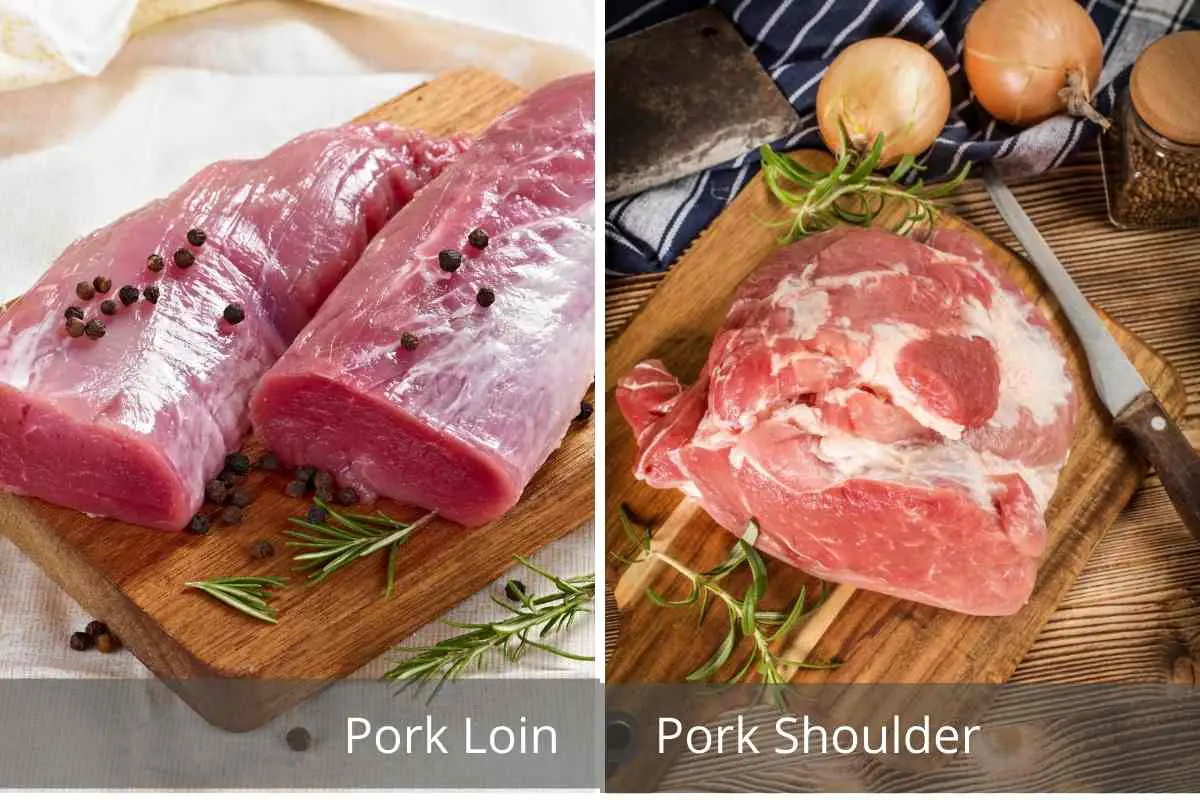
Pork loin is a lean and tender cut that is taken from the back, just above the ribs. It has little fat or muscle, making it ideal for quick cooking methods such as grilling, pan-frying, or roasting. Pork loin retains its moisture and tenderness when cooked quickly at higher heats.
In contrast, pork shoulder is a tougher cut with more fat and marbling. It is taken from the pig’s narrower, triangular shoulder end above the front leg. Pork shoulder requires low slow cooking to become tender and juicy. This makes it perfect for dishes like pulled pork or slow-cooked stews.
It’s important to note that swapping pork shoulder with pork loin or vice versa may not yield optimal results in your recipes. The different textures and flavors of these cuts make them unsuitable substitutes for each other. Pork shoulder should be slow-cooked for tender and juicy results, while pork loin can be cooked quickly for optimal taste and texture.
Pork Shoulder vs Pork Loin: Location on the Pig
Pork shoulder and pork loin come from different parts of the pig. Pork loin is cut from the back, just above the ribs, while pork shoulder is cut from the narrower, triangular shoulder end above the front leg. This difference in location on the pig contributes to their varying textures and flavors.
Pork loin is a lean and tender cut of pork, with little fat or muscle. It has a consistent light color and is flavorful, juicy, and tender when cooked properly. On the other hand, pork shoulder is a tougher cut with more fat and marbling. It has a bright pink or dark red color and requires low slow cooking to make it tender.
Difference Between Pork Loin and Pork Shoulder
When it comes to choosing the right cut of pork for your recipes, it’s important to understand the difference between pork loin and pork shoulder. Pork loin is cut from the back of the pig, just above the ribs. It is a lean and tender cut with little fat or muscle. On the other hand, pork shoulder is cut from the pig’s shoulder end above the front leg. It has some marbling and fat, making it less lean than pork loin.
In terms of cooking methods, pork loin should be cooked quickly at higher heats in order to retain its moisture and tenderness. It is best used for grilling, pan-frying, or roasting. On the other hand, pork shoulder requires low and slow cooking to make it tender. It is ideal for slow-cooking methods such as braising or stewing. Roasting or smoking pork shoulder can also maximize its flavor.
When it comes to taste and texture, there are noticeable differences between these two cuts of pork. Pork loin has a consistent light color and is known for its flavorful, juicy, and tender meat when cooked properly. However, if slow-cooked for too long, it can dry out. On the other hand, pork shoulder has a bright pink or dark red color and is best when slow-cooked. It has a slightly tougher texture compared to pork loin but becomes fork tender when cooked long enough.
Is Pork Shoulder the Same as Pork Loin?
No, pork shoulder is not the same as pork loin. While both cuts come from different parts of the pig, they also have distinct differences in terms of tenderness, fat content, and cooking methods. Pork shoulder is a tougher cut with more fat and marbling, making it ideal for slow-cooking methods like roasting or smoking. On the other hand, pork loin is a leaner and more tender cut that is best used for grilling, pan-frying, or roasting at higher heats to retain its moisture and tenderness.
Pork shoulder and pork loin also differ in terms of texture and flavor. Pork shoulder has a darker red or bright pink color and offers a richer flavor due to its higher fat content. When slow-cooked properly, it becomes tender and juicy, making it perfect for dishes like pulled pork or stews. In contrast, pork loin has a consistent light color and offers a milder flavor. It remains flavorful, juicy, and tender when cooked quickly at higher temperatures but can dry out if slow-cooked.
It’s important to choose the right cut of pork for your recipes to ensure optimal taste and texture. For dishes like tender pork carnitas or pulled pork that require long cooking times to achieve fork-tender results, pork shoulder or butt are recommended choices. These cuts will become tender when cooked slowly and can easily be shredded. On the other hand, if you’re making dishes like teriyaki pork tenderloin or want to slice the meat to serve with side dishes quickly, then pork loin is the better option. Its lean nature allows for faster cooking without sacrificing juiciness.
Can you Substitute Pork Loin for Pork Shoulder?
While it may be tempting to substitute pork loin for pork shoulder in recipes, it’s generally not recommended. The two cuts of meat have distinct differences in texture, flavor, and cooking methods. Pork loin is a leaner cut with little fat or marbling, making it tender and juicy when cooked quickly at higher temperatures. On the other hand, pork shoulder is a tougher cut with more fat, requiring low slow cooking to achieve tenderness and juiciness.
If you were to use pork loin instead of pork shoulder in a recipe like pork carnitas, the meat would turn out dry and tough. Conversely, if you were making teriyaki pork tenderloin, using pork shoulder would result in an overly fatty and less flavorful dish. Therefore, it’s best to stick to the recommended cut of meat specified in your recipe for optimal results.
When to Use Pork Shoulder
Pork shoulder is best used for slow-cooking methods such as roasting, smoking, stewing, or braising. This cut of pork requires low and slow cooking to break down the tough connective tissues and render the fat, resulting in a tender and juicy meat. It is perfect for dishes like pulled pork, carnitas, or Cuban mojo marinated pork. When cooked long enough, pork shoulder becomes fork-tender and shreds well, making it ideal for recipes that require shredded meat.
Additionally, pork shoulder is great for making rich and flavorful stocks or broths due to its high fat content. The fat adds depth of flavor and richness to soups or stews. If you’re planning a BBQ, pork shoulder is a popular choice for smoking or slow-roasting to achieve maximum flavor.
When to Use Pork Loin
Pork loin is a versatile cut of meat that is best used for grilling, pan-frying, or roasting. It holds together well and can be sliced to serve with a side dish. Pork loin is flavorful, juicy, and tender when cooked properly. It is ideal for dishes that require quick cooking at higher temperatures to retain its moisture and tenderness.
Some great recipes to use pork loin in include teriyaki pork tenderloin, where the meat is cooked quickly at a higher temperature to lock in juiciness. Pork loin can also be used to make a nice roast, as it holds together better than pork shoulder which tends to shred easily when cut into. Another delicious recipe option is instant pork and sauerkraut, where the pork loin can be grilled or roasted and served alongside sauerkraut for a flavorful meal.
Thermapen ONE (read our review)
The Thermapen ONE is a highly accurate and reliable instant-read thermometer. With its ability to read temperatures in one second or less and an accuracy of ± 0.5°, you can trust that your meat will be cooked to perfection every time. The Thermapen ONE also comes with a 5-year warranty, giving you peace of mind knowing that it is built to last.
One of the standout features of the Thermapen ONE is its auto-rotate display and motion-sensing capabilities. This means that no matter how you hold the thermometer, the display will always be easy to read. Additionally, the motion-sensing feature ensures that the thermometer will automatically turn on when picked up and turn off when put down, preserving battery life.
Speaking of battery life, the Thermapen ONE boasts an insanely long battery life of up to 2000 hours. This means you won’t have to worry about constantly replacing batteries while using this thermometer.

Which of These Two Pork Cuts is the Healthiest?
When it comes to determining which of these two pork cuts is the healthiest, pork loin takes the lead. Pork loin is lower in calories, fat, and cholesterol compared to pork shoulder. It is a leaner cut of meat with little fat or marbling. This makes it a healthier choice for those looking to reduce their intake of saturated fats and overall calorie consumption.
On the other hand, while pork shoulder is also fairly lean, it contains more fat and marbling than pork loin. This higher fat content can contribute to a richer flavor and juiciness when cooked properly, but it also means that it is higher in calories and unhealthy fats.
In terms of health benefits, choosing pork loin over pork shoulder can help individuals maintain a healthier diet and reduce their risk of certain health conditions associated with high-fat diets. However, it’s important to note that moderation and balance are key when incorporating any type of meat into your diet.
Ultimately, if you’re looking for a healthier option between pork shoulder and pork loin, opting for pork loin would be the better choice due to its lower calorie and fat content.
In conclusion, when comparing pork loin and pork shoulder, it is evident that they both offer distinct qualities. Pork loin is leaner with a tender texture, making it perfect for grilling or roasting. On the other hand, pork shoulder is fattier and benefits from slow cooking methods like braising or smoking. Ultimately, the choice between these cuts depends on personal preference and the desired dish.
Learn More About Grilling
If you want to learn more about grilling, check out these other helpful resources!

